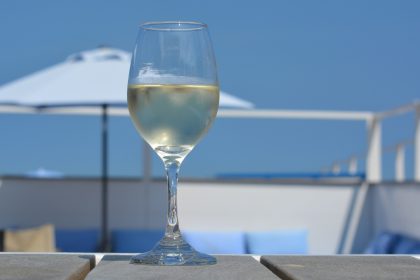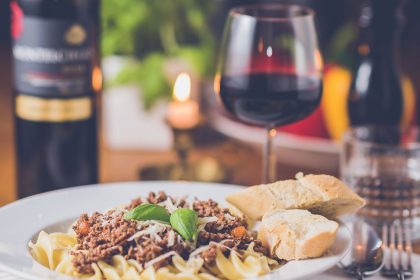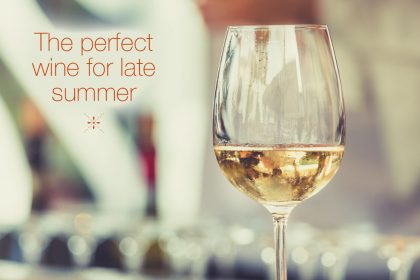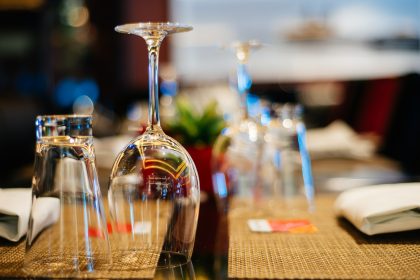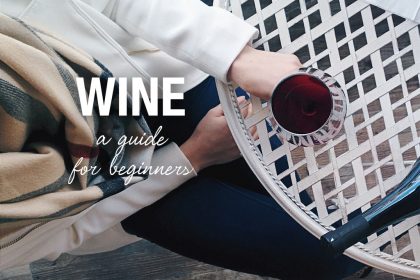Why now is a great time to get to know the scariest wine – Bordeaux!
Find out why our wine expert Helena Nicklin (aka Winebird) considers Bordeaux the scariest wine, and why now is the perfect time to start buying it.
With the news this month that Marks & Spencer is to start selling Bordeaux ‘en primeur’ by the single bottle, there has never been a better time to dip your toe into what is arguably the most complicated and inaccessible wine region around.
Let me be straight with you: ‘proper’ Bordeaux terrifies me, and I’ve worked in the trade for nigh on 15 years.
Of all the wine regions around the world, it conjures up images of the snootiest of all the red trouser brigade, an awful lot of money and the world’s most complicated classification system. If you start at the very beginning however and slowly work your way up, getting a handle on Bordeaux doesn’t have to be quite so overwhelming.
With this in mind, here are the basics: a place to start, written (hopefully) in a way that I wish someone had done for me at the beginning of my wine journey.
What is Bordeaux anyway?
Bordeaux is a wine region in the middle of France on the western coast. It makes red, rosé, white and sweet wines, but it’s the very top end red wines – only about 15% of total wine production – that get most of the attention.
(Fact! The word ‘Claret’ refers to any red wine from Bordeaux. Remember that for your next pub quiz.)
There’s also a famous river. The river Gironde famously splits this wine into three areas, like an inverted ‘Y’. The vast majority of the big names reside on either the Left or Right banks. This is where most of the magic happens.
Famous grapes in Bordeaux
Two red grapes: Cabernet Sauvignon and Merlot. Cabernet is the full-bodied, blackcurranty red that I’ve likened to a professional rugby player in the past. This big boy is the king of the Left Bank.
Merlot on the other hand is more Michael Bublé than Mike Williams (I had to look that one up too) with smooth, chocolatey tones and red berry notes. He’s a right banker. In
Bordeaux at least, the former can be too chiseled alone and the latter, too soft, so blending them together here usually means creating a better wine. There are also a smattering of other blending grapes that are sometimes added: Cabernet franc, Petit verdot, Malbec and Carmenere.
Whites and sweets: Only about 10% of Bordeaux wine is white and these are usually made up of two or more grapes blended together. Aromatic Sauvignon and weighty, waxy Semillon are key here, with a dash of Muscadelle for luck.
Famous Bordeaux villages
For the the top reds, on the Left bank, it’s all about Saint Estèphe, Pauillac, Saint-Julien and Margaux. On the Right Bank, think Pomerol and St-Emilion.
For white, Graves and Pessac-Leognan are known for their great, dry whites but if it’s sweet stuff you’re after, Sauternes is the (world famous) king and these are made with the same grapes as the dry wines.
Not every Bordeaux is worth buying
I’m sorry France, but a lot of off-the-shelf, supermarket Claret is pretty terrible. Most tend to lean either towards a more ‘classic’ style that’s metallic and austere without much fruit or a more ‘international’ style with lots of juicy berries, but tastes like it could come from anywhere.
If you’ve had a few of these, you may wonder what the fuss is all about. The top quality 15% of production has a classification system of epic proportions. I could write a thesis on this but instead, I will direct to you this informative page by Berry Bros. & Rudd.
What is ‘en primeur’?
To buy wines ‘en primeur’ means to buy wines before they are even bottled and released to market, usually from the villages named above. You buy them exclusive of Duty and VAT and they are shipped not long after bottling to a warehouse.
It was traditionally a cash flow thing where the buyer was rewarded for helping take stock off the producer’s hands so they didn’t have to fund ageing it, in return for a good ‘release’ price (these wines can go up a lot in value).
En primeur wine can traditionally only be purchased by the unmixed case (twelve bottles of the same wine), which can be incredibly expensive. You also often need to buy several other cheaper wines too to ‘earn’ your allocation. Ouch! En primeur is a big business, where business has been the operative word. Until now.
All the villages mentioned above produce iconic, collector items that are often very hard to get hold of. You’ll see older vintages available by the bottle but they are much more expensive. The buyers from M&S however, have tasted and selected thirty two wines bought ‘en primeur’ from the 2014 vintage and are offering them all by the bottle.
They’re not that cheap as far as wine goes in general – they start at £26 for Chateau-Pontesac and go up to £420 a bottle for the famous Chateau Lafite – but for ease and the ability to get to know some of the big names bottle by bottle, they represent good, relative value and a huge opportunity: this is where you start when you want to begin a journey with the most famous wines of Bordeaux.
My pick of Bordeaux wines from M&S
Your fine Bordeaux starters for ten from M&S:
Château Pontensac 2014 (Left bank – Médoc) £26 – silky and saline with solid black and red fruit flavours. About drinkable now but will sing in three to ten years plus.
Chevalier de Lascombes 2014 (Left bank – Margaux) £30 – elegant, if austere. More mineral than fruit but will age well. A prima ballerina.
Château Chauvin (Right bank – St-Emilion Grand Cru Classé) £37 – as far as Bordeaux pricing goes, this, believe it or not, is a bargain in my opinion. It’s old school, cedar, leather and smoke with a gorgeous silky texture. Try not to drink it for at least five years but if you do, give it tonnes of air and serve with food.
You can see the full M&S range of 2014 en primeur Bordeaux wines here.
Winebird is a freelance writer, presenter and author of VINALOGY: wine basics with a twist! You can follow her on Twitter, and find her on YouTube.
*Disclaimer: This piece was not sponsored by M&S. It was purely an initiative that excited me as a wine lover. I may now, for the first time, start buying some Bordeaux, bottle by bottle.





